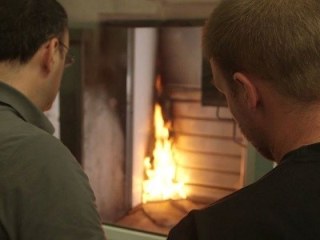An innovative façade, able to turn solar energy into heat for residents’ use, will be installed next year in a building in Merida, Spain. The complex insulation system has passed all the tests and will prove its capabilities in real-life conditions

The worldwide energy consumption of buildings is expected to grow by 45% from 2002 to 2025, according to the SMART 2020 study carried out by the international NGO The Climate Group.
To reduce energy demand in old buildings across Europe, a consortium of researchers has designed an industrialised façade system for use in retrofitting works. The system brings an imaginative technological solution that can be applied to different types of building and façade orientations.
"This system provides the tools for producing energy as well as insulating the building better: two major issues of the coming years in Europe," explained Julen Larraz Astudillo, architect at the Sustainable Construction Division of the TECNALIA research centre, located in San Sebastian, Spain.
The insulation technology is ready now for full-scale implementation in a real building in Merida, a city in the south of Spain. Before getting to this point, the façade went through to a series of extensive tests, which checked its fire, water, wind, impact, acoustic and permeability resistance.
The fire test was the most demanding. "We had many concerns about it, due to the new composite materials the façade is made of (glass fibres and an organic binder) and to the complexity of the units. Many of them had different technologies and elements that could fail the test," says Julen Astudillo. The façade proved to be fire resistant, in compliance with European standards.
The water test checked the tightness of the technological units. "Rain water must not touch the inner side of the façade, which is behind the technological units. Otherwise, it will deteriorate the insulation," notes Astudillo.
The façade’s technology, developed under the research project MeeFS, was also submitted to heavy object impact tests. During the wind trial, the façade was subject to pressures until up to 305 kg/m2. "We checked the different components of the façade; they didn’t break and the distortion of these elements lasted just one minute," he adds.
A particular unit of the façade, called Advanced Passive Solar Collector and Ventilation Unit, was required to pass special tests, like acoustic and permeability tests. This is because it connects the interior and the exterior sides of the building through holes made in the original façade of the construction. "These connections could weaken the sound insulation of the original façade or could let the air pass into the building, affecting its heating quality," explains Julen Astudillo.
None of this happened during the technical assessments. "All the tests have been successful: this means that the whole demonstration using such an innovative façade can be insured by insurance companies in the whole Spain, for the future use on any other Spanish building," says Serge Galant, C.E.O. of Technofi, a science and technology company, located in Sophia Antipolis, France. He is defining an insurance policy for the field trial of the MeeFS innovation in Spain.
However, the system needs to meet cost effectiveness requirements in order to penetrate the competitive construction market. "The full-scale demonstration of the MeeFS façade technology fits in with a new business trend, already used by energy service companies (ESCOs)," explains Galant.
ESCOs are more often companies that belong to large energy utility groups. They offer long-term contracts, of 20 years or more, where they cover the risk of a full refurbishment against the payment by the owners of a fixed yearly energy bill which corresponds to the reduced energy needs of the refurbished buildings.
The project’s researchers admit that their system is neither simple, nor cheap. Yet Julen Astudillo is optimistic about the possibilities of the façade having a good return on investment.